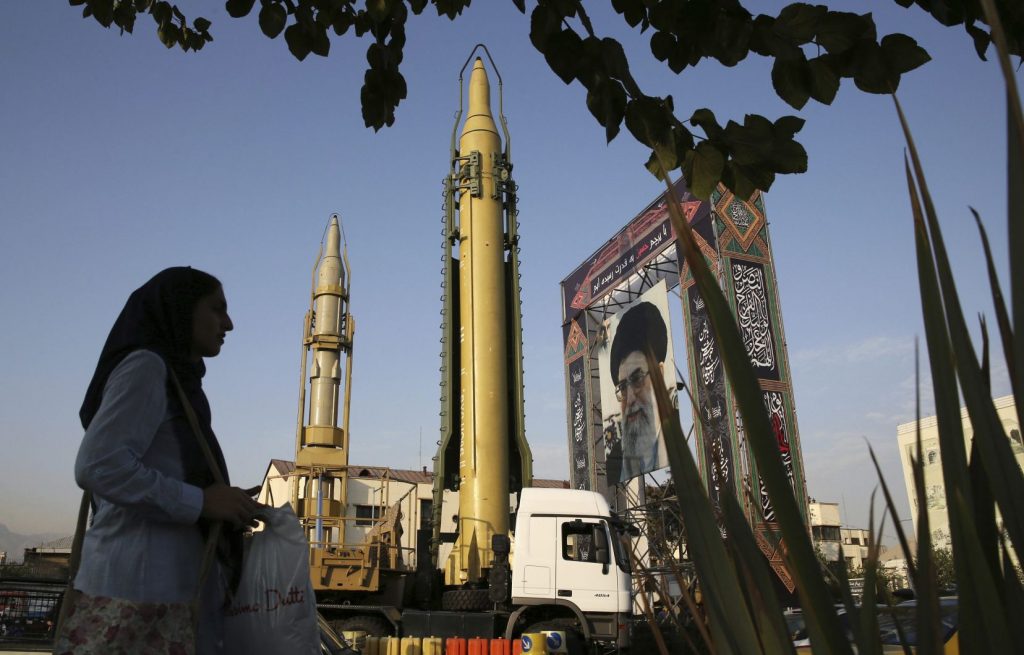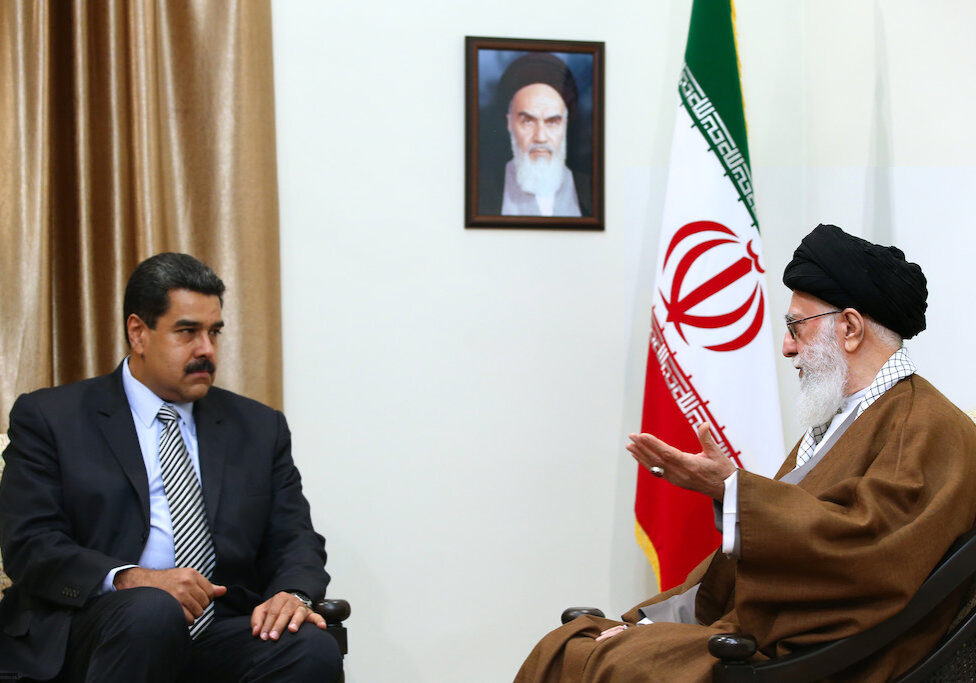Australia/Israel Review, Featured
The Price of a Nuclear Weapon
Aug 31, 2018 | Ran Porat

The decision by US President Donald Trump, to withdraw from the 2015 nuclear agreement with Iran (Joint Comprehensive Plan of Action, or JCPOA) on May 8 has meant the gradual resumption of American sanctions against the Islamic republic, starting in early August.
The immediate focus of the media and analysts was on the massive negative economic effect of these trade and especially financial sanctions.
Yet, it seems that in the discussion about this issue, very few have dealt with the broader price Iran has been willing to pay, over many years, for its open aspiration to build and develop an indigenous nuclear program. Specifically, when measuring and weighing a wide range of “costs” affiliated with the nuclear project – economically, politically, strategically – has it been worth it for Teheran?
Two Canadian scholars, Thomas Juneau and Sam Ravazi, set out to answer this question. In their recently published article, “Costly gains: a cost–benefit assessment of Iran’s nuclear program”, Nonproliferation Review (June 2018) they chose a holistic approach in their review of the gains versus losses Iran incurred directly or indirectly related to the nuclear program.
Juneau and Ravazi examine the direct costs of the program and the costs of sanctions on the Iranian economy which followed its exposure. They engage with the program’s effects on Iran’s power as an actor – examining the effects of the pursuit of nuclear capability on Iran’s military strength, its regional and international status and influence, and the security of the country and its people. Finally, they even explore how the program may have affected the consolidation of Iranian national identity.
This is not a simple exercise and entails (as the authors admit) many methodological and empirical challenges – due not only to missing or unreliable data, but also to the difficulties of making numerical estimates of “soft”, less quantifiable outcomes of the nuclear program, such as status and power. Nonetheless, their important effort sheds new light on the motivation and commitment of Iran to its nuclear “baby”.
In almost every aspect investigated by Juneau and Ravazi the result is the same and the cumulative bottom line is clear: “the costs of Iran’s nuclear program have exceeded the benefits.”
For example, Iranian oil production dramatically fell from six million barrels a day (mbd) before the Islamic revolution (1976) to one mbd in 2012. While this has partly bounced back following the implementation of the JCPOA, the loss of revenue over the years of reduced production was enormous, estimated at tens of billions of dollars per year over decades.
To complete the Bushehr nuclear reactor, an important benchmark in the development of Iran’s nuclear program, Teheran has spent around US$11 billion (A$15 billion), making it the most expensive nuclear reactor in the world. The result is disappointing, “Bushehr only meets 2 percent of the country’s energy needs.”
Juneau and Ravazi also cite estimates suggesting that Iran’s economy has shrunk between15 and 20% since the imposition of major economic sanctions in 2010.
The economic downturn, and of course the oppressive political and social structures, has resulted in a massive “brain drain”. The cost of this mass exodus of the elite and educated is estimated by the Iranian Government to be US$40 billion (A$55 billion) annually.
Unable to purchase badly needed new weapons systems and basic equipment – all strictly prohibited under existing international sanctions – Iran’s military power has also suffered a major blow. Facing a more hostile environment than ever, with Sunni states aligning with the “Great Satan” (US) and the “Small Satan” (Israel) against Teheran, “the nuclear program has been costly for Iran’s security by intensifying its already acute security dilemma.” Iran’s status in the Muslim world and the Middle East as a symbol of Islamic power has also deteriorated. As a poll conducted in seven Arab countries in 2017 suggested, Iran is now perceived mostly negatively or as a threat across the Middle East.
The most important factor contributing to the cost side of the equation is the huge financial price tag of the sanctions on Iran’s economy. Yet Iran’s ruling mullahs, many of whom are corrupt and enjoy a lavish lifestyle, cynically demand that the people endure the hardship of the sanctions, calling on Iranians to practise “resistance economics” to circumvent sanctions.
There is little doubt that Iranian policymakers must be fully aware of the cost of the nuclear program on many levels. One very strong signal of that cost to them has been the social and political unrest over recent months, where in mass rallies in all of Iran’s major cities, crowds have yelled “Death to the dictator”. There is now likely real fear among the ayatollahs and their violent partners, the hardliners of the Iranian Revolutionary Guard Corps, that their regime could be toppled. The mullahs must see the bite of the sanctions on the economy, and their country’s political isolation in the Middle East.
Yet, Iran remains defiant and committed to aggressively pursuing nuclear capabilities, which it insists are for “peaceful purposes”. Why?
The answer is that Teheran is convinced that there is a glittering prize at the end of the dark tunnel. This prize is viewed as a big enough benefit to reshuffle the cards and make it all worthwhile. As Juneau and Ravazi put it, “Given the volatility of Iran’s security environment, Iranian decision makers initially seemed to believe that the nuclear program would enhance the country’s security.”
As information brought to light from the concealed nuclear archive, which was boldly stolen from the heart of Teheran by Israel’s Mossad earlier this year, makes clear – acquiring nuclear weapons was, and is, at the core of Iran’s efforts. And Iranian decision-makers see that prize as offering benefits so incalculable as to outweigh all the costs they have paid.
What happens – if or when – a state crosses the Rubicon and becomes a threshold nuclear entity – a country which can rapidly, independently and at will, produce its own indigenous bomb? You do not need actual weapons, only that capability, to get game-changing strategic benefits. Dealing with a nuclear threshold state can no longer be along the lines of “speak softly and carry a big stick” – because now the other side has its own stick that you must never risk being wielded in anger.
The North Korean case is the gloomy archetype of that reality. Suspected of being on the verge of passing the nuclear weapons threshold since the 1990s, it was subjected to aggressive international sanctions for many years. Its economy may well be viewed as the perfect “resistance economy.” Yet, along with the economic pressure, Pyongyang was wooed by American presidents (Clinton, Bush and Trump) and regional states to negotiate agreements to stop or slow down the drive towards the atomic watershed. The end of the story is well known: sustained international diplomatic efforts – involving sanctions, other forms of pressure, and negotiations – could not prevent North Korean from getting nuclear weapons. Through the eyes of Kim Jong-un, this is an unprecedented success which overnight moves him from the periphery of world events to centre stage. Courted by South Korea, enjoying “super star” status during his June summit with US President Trump, Kim Jong-un is living proof how things can change with the atomic card in your pocket. The immense price paid for its nuclear project by Pyongyang is now starting to deliver major dividends.
We are at the penultimate minute before Iran effectively becomes the next North Korea. Current American policy makers are fully aware of the urgency arising from this looming tipping point whereby the expected benefits begin to exceed the costs of the Iranian nuclear project. To prevent this scenario from becoming reality, the Americans are exploring every avenue to quickly and radically increase the costs of Iran’s atomic ambitions. US Secretary of State Mike Pompeo laid out, on May 21, a comprehensive strategy targeting Iran’s nuclear and regional ambitions. He also recently set up an Iran Action Group which would further develop the strategic planning for increasing the pressure against Iran and to coordinate various US actions to that end.
There is reason to believe that extensive and multi-faceted pressure exerted on Iran may be bearing fruit. US sanctions are now being introduced where Iran is most vulnerable, for example the energy and transport sectors, as well as blocking international currency transactions with Teheran. These steps are designed to push Iran’s leadership to recalculate the costs and benefits of their current course, especially as internal dissent mounts. Increasing the costs in all forms to yet-to-be seen levels may yet force Iran to relinquish or postpone indefinitely its nuclear dream – which is an atomic nightmare for the rest of the world on numerous levels.
All responsible international players, Australia included, should be joining in and working together to raise the cost for Iran’s nuclear adventure as much as possible. And they need to think about how this should be done right now, before it’s too late.
Dr. Ran Porat lectures on Middle East studies at Monash University and is a researcher at the Australian Centre for Jewish Civilisation.






